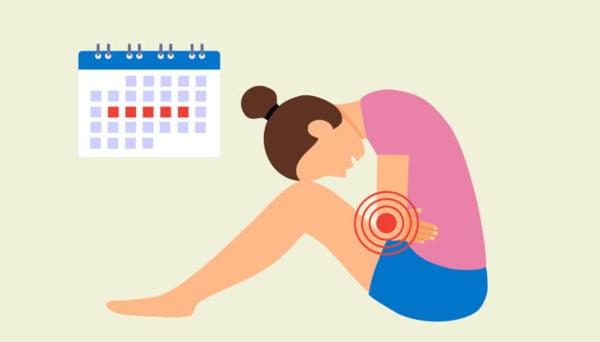Dysmenorrhoea
Pain experienced throughout the menstrual period is known as dysmenorrhea. Usually originating in the lower abdomen, the pain can also spread to the back and inner thighs.

Description:
There are two types of dysmenorrhea: primary and secondary. Recurrent lower abdomen pain that occurs during the menstrual cycle and is unrelated to underlying pathology or other disorders is known as primary dysmenorrhea. Secondary dysmenorrhea is linked to a pathology that may be hypothesized or identified clinically. During their reproductive years, patients who are menstruating frequently complain of dysmenorrhea. Significantly detrimental effects on emotional psychological and functional health may be linked to dysmenorrhea. Regardless of age or ethnicity, dysmenorrhea is one of the most prevalent gynecological issues among patients who are menstruating. It is one of the most commonly found causes of pelvic pain.
Cause:
Your uterus contracts (tightens up) in response to a hormone called prostaglandin, which causes menstrual cramps. Your uterus contracts more forcefully during menstruation because prostaglandin levels are higher during this time. This is the soreness and cramping you experience. The blood and tissue that emerges from your vagina during your period is called your uterine lining, and these contractions aid in shedding it. Just prior to the onset of menstruation, prostaglandin levels increase. After you start your period, levels drop, which is why cramps usually go away in a few days. Secondary dysmenorrhea causes: • Endometriosis: A disorder in which the endometrium of the tissue lining your uterus develops outside of it. These tissue fragments can cause discomfort swelling and scarring when they flow during your menstrual cycle. • Adenomyosis: A disorder in which the uterine lining develops into the uterine muscle. This disorder may result in pain irregular bleeding and an enlarged uterus compared to normal. • Fibroids, also known as benign tumors, are noncancerous growths that can occur within outside or within the uterine walls. • Pelvic inflammatory disease (PID): This bacterial infection begins in the uterus and can extend to the other reproductive organs. Pain during sex or in your stomach can be symptoms of PID. • Cervical stenosis: A disorder in which the cervix narrows as a result of a procedure medication or another illness. • Congenital conditions: Menstruation might be uncomfortable if you have certain disorders from birth. This could be an atypically shaped uterus or other disorders pertaining to your fallopian tubes or ovaries.
Symptom:
Gastrointestinal symptoms like nausea bloating diarrhea constipation vomiting and indigestion might be linked to dysmenorrhea. Women who report with primary dysmenorrhea frequently have headaches lower back discomfort and irritability. Dizziness and fatigue may also be related. If you have painful periods you may experience the following symptoms: • Aching throbbing pain in your belly (pain may be intense at times). • An abdominal pressure sensation. • Hip lower back and inner thigh pain. • Other symptoms such as headaches nausea and dizziness. Most of the time the discomfort starts 24 to 48 hours before your period and goes away 48 hours after that.
Ayurveda Treartments:
Pichu Lepanam Prakshalanam Nabi poornam Avagahaswedanam Churna pinda swedanam Patra pinda swedanam
Naturopathy Treartments:
Hip bath Arm & foot bath Enema Steam bath Mud therapy Packs Reflexology Acupuncture Manipulative therapy Diet therapy Clinical yoga Kriyas.
